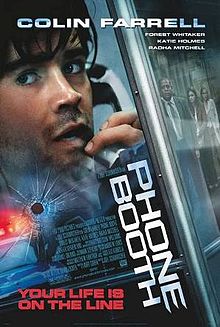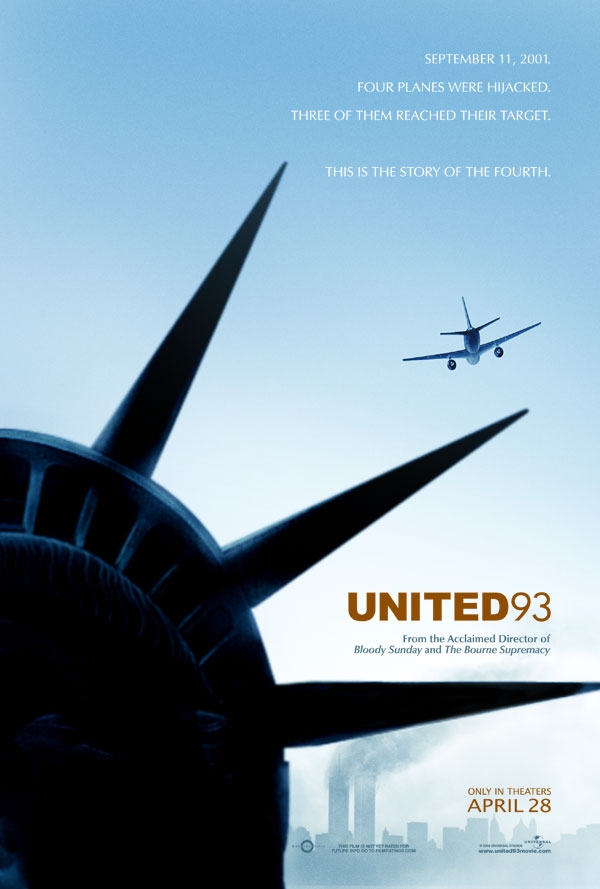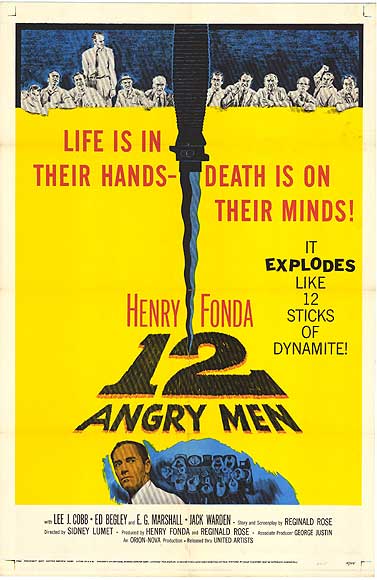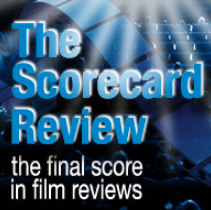We start the Top 7. You finish the Top 10.
Real time – in which the plot of the film covers the same amount of time as it takes to watch – can be a blessing or a curse. When a film calls attention to it, real time can become a gimmicky distraction. On the other hand, it can add a real sense of urgency if the film just allows the events to unfold before us. There are a number of different ways filmmakers use it. For example, the action may be primarily set in one location. Other ways it is used involve hostage situations, characters waiting for something, or simply following characters around from place to place. It can be a tricky thing to pull off perfectly. So I’m deciding that as long as the film makes a real attempt, and the majority of the action takes place in real time, it is fair game.
The latest film to utilize real time storytelling is Roman Polanski’s Carnage, which opened in limited release in December and then a wider release in January. Polanski’s film falls into the one location category, and it’s one I’m very much looking forward to seeing. Whether it will earn a place on this list remains to be seen. Until then, here are my TOP 7 films presented (mostly) in real time.
 7. Phone Booth (2003)
7. Phone Booth (2003)
Recap: A New York publicist enters a phone booth to talk to his mistress. He gets more than he bargained for when he answers the ringing phone and finds a man with a sniper rifle waiting for him on the other end of the line. Reason: On paper, a film where a man is held hostage in a phone booth for the majority of the running time doesn’t seem like it should work. And I’ll admit that I didn’t expect it would. The joke was clearly on me; I liked the film when I first saw it, and still enjoy it today. Farrell spends most of the film in a phone booth, which due to the real time aspect could have turned into a bore. Luckily that is avoided thanks in large part to Farrell’s charisma, Kiefer Sutherland’s vocal performance, and the tension that director Joel Schumacher manages to sustain for most of the film’s runtime. Phone Booth served as one of my first experiences with a film being in real time, and while it’s not perfect, it’s one that makes solid use of the style.
6. Run Lola Run (1999)
Recap: A German woman has to obtain 100,000 marks, or else her boyfriend – who lost the money that belongs to a crime boss – will rob a supermarket. She has 20 minutes… and three tries. Reason: It might be cheating a bit to place this one on the list. While the film is roughly 80 minutes long, the story only covers about 20 minutes. But those 20 minutes pretty much unfold in real time because it repeats Lola (Franka Potente) running from place to place three different times with three different outcomes. Director Tom Tykwer keeps the film moving at breakneck speed, assisted in large part by some crafty editing and a propulsive techno score (complete with vocals from Potente). The film does jump around a bit, but much of the action unfolds in pulse-pounding real time. Run Lola Run may be too frenetic for some, but for me it is one of the most exciting films I’ve seen.
 5. United 93 (2006)
5. United 93 (2006)
Recap: On September 11, 2001, four airplanes were hijacked by terrorists. This film depicts, as true as possible, the heroic acts of the passengers on United Airlines Flight 93. Reason: The inevitability of reaching a conclusion is present in every film. That increases drastically when the film is a real time depiction of events from one of the most recognizable dates in US history. United 93 could have been a colossal failure, an exploitative exercise that manipulates its audience. Instead, Paul Greengrass (working with mostly unknown actors) crafted one of the most harrowing, powerful films I’ve seen. None of us can begin to fathom what it was like to be on United Airlines Flight 93 that day, but the film traps us and makes every viewer feel the tension and visceral horror of the situation. The final 20 minutes, despite already knowing how it ends, serve as a gut punch that deeply affected me. United 93 is as emotionally draining as they come, but ultimately it is a rewarding commemoration of those who were lost.
4. High Noon (1952)
Recap: On his wedding day, Marshal Will Kane is ready to give up his badge in exchange for a quieter life. Before he can, however, he learns that criminal Frank Miller and his gang are returning to town. As Miller’s arrival grows closer, Kane looks for help from the townspeople, only to discover that he may be alone. Reason: If I was to sit down and make a list of my favorite films, there wouldn’t be a whole lot of Westerns to be found. That doesn’t mean I dislike the genre, but there are simply very few I outright love. Of course, as with every rule, there are exceptions and Fred Zinnemann’s High Noon is the greatest such example. This film falls somewhere between the "following someone" and "waiting for something" categories of real time, as we watch Marshal Will Kane (well-played by Gary Cooper) do what he can to prepare for the impending arrival of Frank Miller and his gang. The use of real time in High Noon succeeds at adding a real sense of foreboding inevitability, and leaves us, the viewer, hoping that Will Kane is ready for what’s coming.
3. Rope (1948)
Recap: Two men kill one of their classmates and hide his body in a chest in their apartment. To see just how far they can go with their “game,” they invite a small group – including the deceased’s father, fiancé, and their old teacher – to a party. Reason: Due to my admiration of Alfred Hitchcock and James Stewart, there was always a good chance I was going to like Rope. What I didn’t expect was that I’d end up looking at it as one of my favorite Hitchcock films, and yet that is exactly what happened. There is a lot of interesting subtext going on between the co-murderers, Brandon and Philip (played by John Dall and Farley Granger), which is especially fascinating considering this film was made during a time when depicting homosexuality was banned by the Production Code. Beyond that the film is notable for its use of real time and long takes – the film is cleverly edited to make the shots appear continuous. Sure, like a lot of films presented in real time, this one can be picked apart if you look closely (certain events are sped up), but the film is so engaging it is easy to look past that and appreciate how successful it is as a whole.
 2. 12 Angry Men (1957)
2. 12 Angry Men (1957)
Recap: During the trial of a young Puerto Rican man accused of killing his father, one juror votes not guilty based on reasonable doubt. He spends the next 90 minutes arguing his case. Reason: I adore Sidney Lumet’s 1957 debut, 12 Angry Men, so it’s really a testament to how much I love the film still to come that it isn’t number one on this list. Other than brief scenes at the beginning and end, this film is made up entirely of twelve jurors deliberating in one room. Henry Fonda as Juror #8 is the one dissenting vote when the deliberation begins, but over the course of the film he makes the case for reasonable doubt, slowly getting others to see his side of things. In other hands this could have been a chore to sit through, but this is one of the more gripping films I’ve had the pleasure of watching. Working from a fantastic script, Lumet keeps things moving and the film benefits from stellar performances across the board, especially by Fonda, Ed Begley, Martin Balsam, and Lee J. Cobb as Fonda’s biggest opposition.
1. Before Sunset (2004)
Recap: Nine years after their first encounter in Vienna, Jesse and Celine meet again by chance and spend an afternoon together in Paris. Reason: Richard Linklater’s sequel to 1995's Before Sunrise, this time titled Before Sunset, is one of my favorite films of 2004. Further, it is among my favorite films of the last decade, as well as being a personal favorite romantic film. All of that combines to make Before Sunset my favorite film presented in real time. Linklater gets great performances out of Ethan Hawke and Julie Delpy, who return to the characters they helped craft a decade earlier. The use of real time – something that was not used in Before Sunrise – adds an extra layer of inevitability to their chance encounter, further reflecting the way time is running out for them to be together. As Hawke’s scheduled flight grows ever nearer, we dread their impending separation. My only complaint is that the film has to end, but that is alleviated by a fantastic, unforgettable ending.
